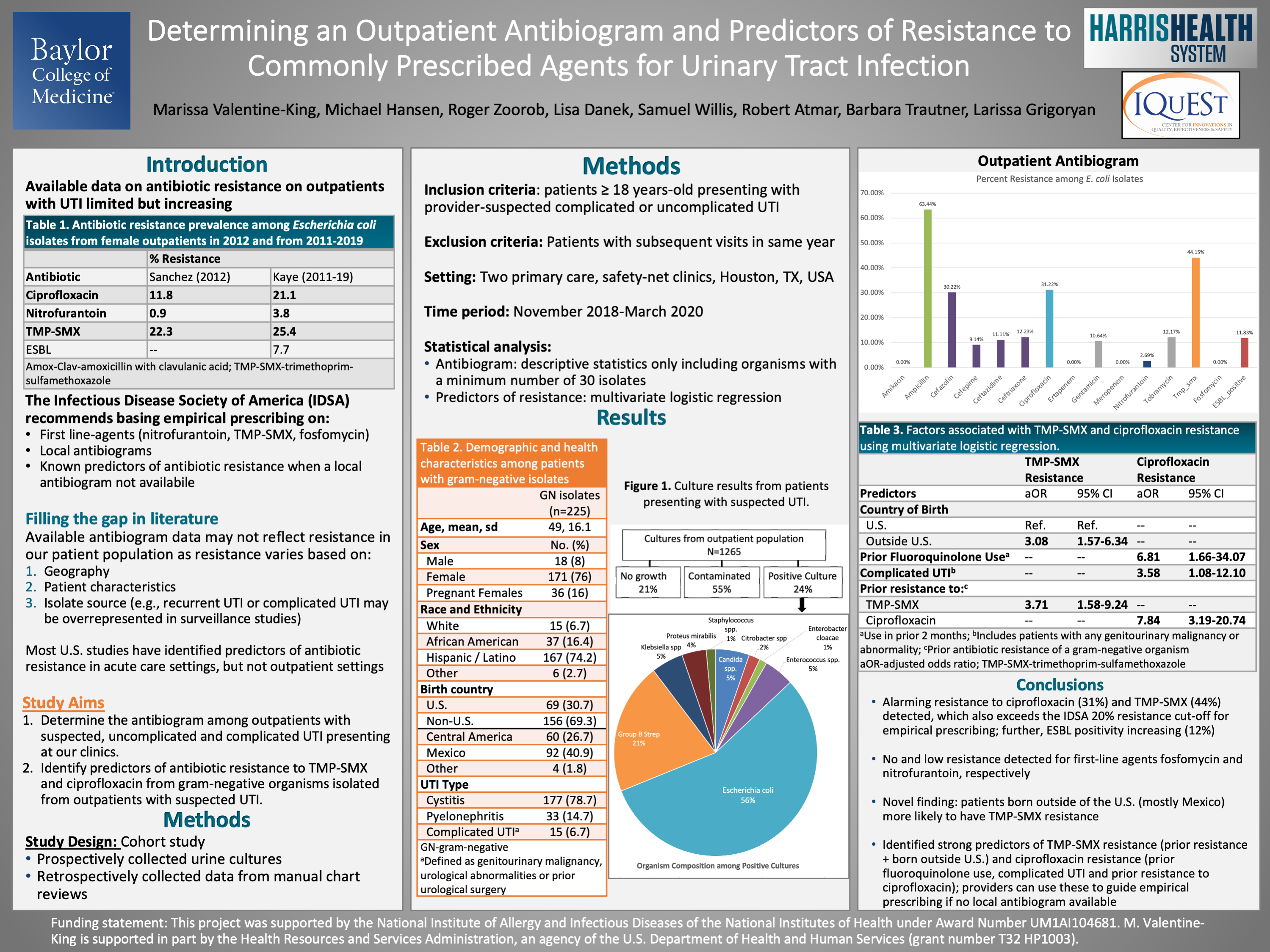SRFP072: Outpatient Antibiogram and Predictors of Ciprofloxacin and Trimethoprim-Sulfamethoxazole Resistant Urinary Tract Infections
Marissa Valentine-King, PhD, BSN, MPH, RN; Roger Zoorob, MD, MPH; Barbara Trautner, MD, PhD; Larissa Grigoryan, MD, PhD

Jack Westfall
jwestfall@aafp.org 11/21/2021Terrific poster and presentation. Thanks for your work. and thanks for sharing at NAPCRG. i keep learning new things, every year.